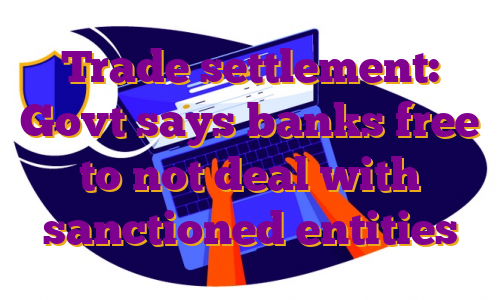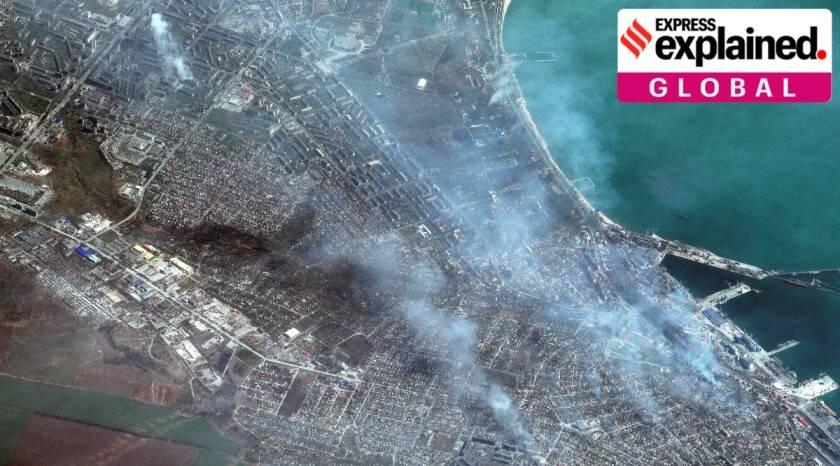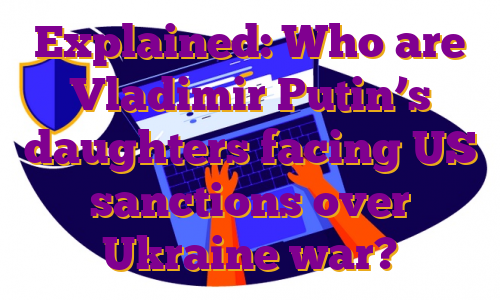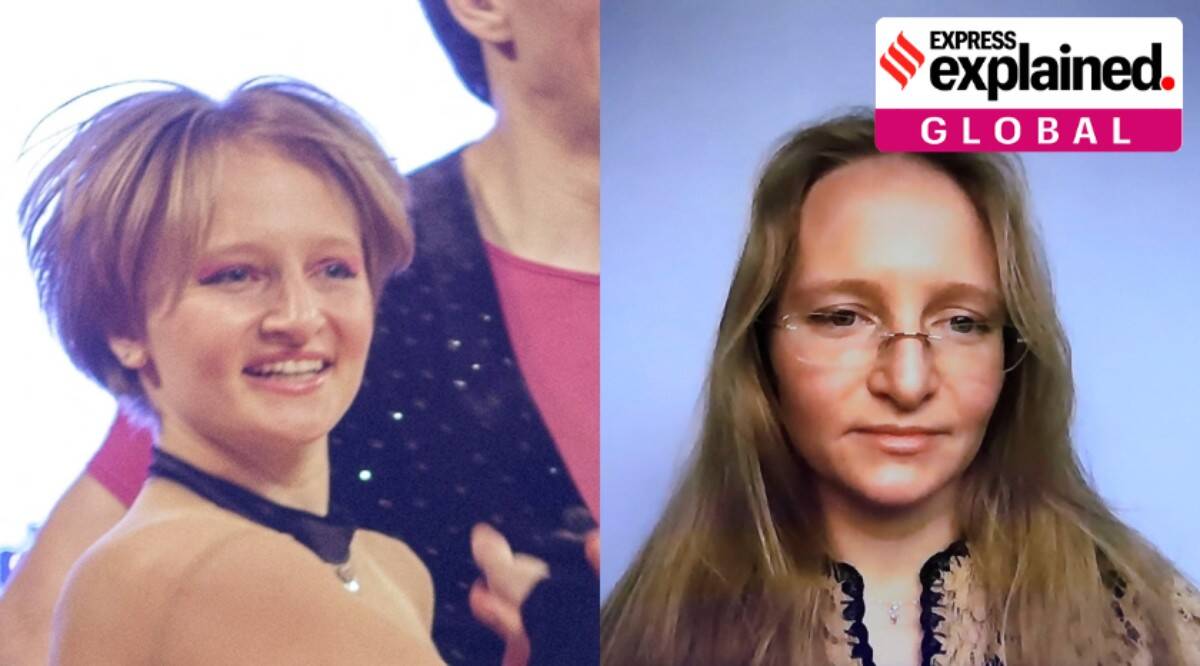Russia has tightened its control over its internet. Authorities have blocked access to Meta-owned Facebook and restricted access to Twitter.Nurphoto | Getty ImagesRussians are turning to virtual private networks to bypass the country’s tightening internet controls following the invasion of Ukraine.VPNs can mask an internet user’s identity and location to help them access blocked websites and services.The top 10 VPN apps in Apple’s App Store and Google Play Store in Russia collectively saw nearly 6 million downloads between Feb. 24, the day the invasion began, to March 8, according to data from SensorTower compiled for CNBC.This was up 1,500% when compared with the top 10 VPN apps in the previous 13-day period. Russia’s internet has been subject to censorship for years, though major U.S. platforms like Facebook, Twitter and Google have been freely available, unlike in China where they are completely blocked. These companies however have operated under the threat of being blocked, especially if they host content that is perceived to be critical of the Kremlin.But President Vladimir Putin has looked to tighten his grip on the internet more recently. In 2019, Russia enacted the “sovereign internet” law giving authorities wide-ranging powers to try to disconnect its internet from the rest of the world. At the time, Russia said the law was designed to enhance its protection against cyberattacks.As the invasion continues, Russia is looking to further restrict access to foreign internet platforms. Meta-owned Facebook was blocked on March 4, while access to Twitter is restricted.On March 5, demand for VPNs surged more than 10 fold above the average, according to Top10VPN, a review and data website.”As various companies have begun restricting access to their products in Russia, VPN apps have experienced a surge in adoption in the market as Russian users attempt to bypass these restrictions,” a SensorTower spokesperson told CNBC via email.”The installs of VPN apps will likely continue to climb as restrictions continue ramping up. At the moment, marketplaces such as Apple’s App Store and Google Play are still available — however, that may very well change in the future.”VPN company Surfshark said its weekly sales in Russia increased by 3,500% since Feb. 24, with the most significant spikes recorded on March 5 to March 6 when Facebook was blocked.”Such a rapid surge means that people living in Russia are actively looking for ways to avoid government surveillance and censorship,” a Surfshark spokesperson told CNBC.Meanwhile, Twitter has launched a version of its website on Tor, a service that encrypts internet traffic to help mask the identity of users and prevent surveillance on them.While Russia has moved to block services, a growing list technology companies have decided to suspend operations in the company.This month, Netflix and Apple are among a long list of technology companies that have suspended sales or services in Russia. .
Trade settlement: Govt says banks free to not deal with sanctioned entities
Dear Reader,
Business Standard has always strived hard to provide up-to-date information and commentary on developments that are of interest to you and have wider political and economic implications for the country and the world. Your encouragement and constant feedback on how to improve our offering have only made our resolve and commitment to these ideals stronger. Even during these difficult times arising out of Covid-19, we continue to remain committed to keeping you informed and updated with credible news, authoritative views and incisive commentary on topical issues of relevance.
We, however, have a request.
As we battle the economic impact of the pandemic, we need your support even more, so that we can continue to offer you more quality content. Our subscription model has seen an encouraging response from many of you, who have subscribed to our online content. More subscription to our online content can only help us achieve the goals of offering you even better and more relevant content. We believe in free, fair and credible journalism. Your support through more subscriptions can help us practise the journalism to which we are committed.
Support quality journalism and subscribe to Business Standard.
Digital Editor
.
3rd-party insurance premium hike for 2-wheelers may not impact demand: ICRA
The upward revision in the third-party insurance premium for two-wheelers, which has come into force from June 1, is unlikely to materially impact the demand, credit ratings agency ICRA said on Friday.
ICRA said it expects a 7-10 per cent year-on-year volume growth in the two-wheeler industry this fiscal, despite inflationary pressures and elongated semiconductors shortage due to the Russia-Ukraine war.
After a two-year moratorium due to the COVID-19 pandemic, third-party insurance premium rates have been hiked between 15-20 per cent for the premium category (more than 150 cc category).
However, the entry-level motorcycles and scooters (75 cc-150 cc), which accounts for 89 per cent in the overall two-wheeler volume, has been spared of any hike.
The increase in third party insurance premiums is, therefore, unlikely to materially impact the two-wheeler demand, ICRA said.
Moreover, given the fact that the less than 1 per cent increase in road price for the premium segment on account of the rate hike is also not significant, the rate hike is unlikely to have a major impact on consumer sentiments and comes as a relief for the industry, which has been grappling with muted demand, it stated.
Domestic two-wheeler industry volumes contracted for a third consecutive year in FY2022, with the consumer sentiments remaining muted. The cost of ownership of a two-wheeler has been steadily increasing over the years, thereby impacting affordability, said Rohan Kanwar Gupta, Vice President, Corporate Ratings, ICRA.
“Original equipment manufacturers (OEMs) have been forced to hike prices on account of multiple factors such as raw material hardening, transition to stringent emission norms and changes mandated by regulations, especially with regards to safety standards.
“In FY2022, even as there was no impact of regulatory notifications on prices, the OEMs had to pass on raw material hardening impact through multiple price hikes. As a result, enhanced cost of acquisition coupled with heightened crude prices have led to a significant increase in the cost of the ownership,” said Gupta.
Noting that aided by a recovery in rural sentiments post a healthy rabi harvest and pent up demand for festivals and weddings, wholesale volumes of motorcycles posed a recovery in April and May; ICRA said, reopening of education institutes and reversal in work-from-home trends in corporate India also supported the scooter offtake, thereby raising hopes of recovery in prospects of the two-wheeler industry.
As demand remains fragile, a further increase in the cost of acquisition could have constrained demand recovery for 2Ws in the near term, the ratings agency said, adding, the fact that the entry-level two-wheeler segment has been left out of the insurance price hike, comes as a relief for the industry.
Even as inflationary pressures and elongated semiconductor chip shortage due to the ongoing Russia-Ukraine conflict continue to remain headwinds for the industry, a broader vaccination coverage, reopening of education institutes and corporates; and expectations of normal monsoon, all coupled with a low base, are expected to drive a 7-10 per cent year-on-year volumes growth for the industry in FY2023.(Only the headline and picture of this report may have been reworked by the Business Standard staff; the rest of the content is auto-generated from a syndicated feed.)
 Dear Reader,
Dear Reader,
Business Standard has always strived hard to provide up-to-date information and commentary on developments that are of interest to you and have wider political and economic implications for the country and the world. Your encouragement and constant feedback on how to improve our offering have only made our resolve and commitment to these ideals stronger. Even during these difficult times arising out of Covid-19, we continue to remain committed to keeping you informed and updated with credible news, authoritative views and incisive commentary on topical issues of relevance.
We, however, have a request.
As we battle the economic impact of the pandemic, we need your support even more, so that we can continue to offer you more quality content. Our subscription model has seen an encouraging response from many of you, who have subscribed to our online content. More subscription to our online content can only help us achieve the goals of offering you even better and more relevant content. We believe in free, fair and credible journalism. Your support through more subscriptions can help us practise the journalism to which we are committed.
Support quality journalism and subscribe to Business Standard.
Digital Editor
!function(f,b,e,v,n,t,s){if(f.fbq)return;n=f.fbq=function(){n.callMethod?n.callMethod.apply(n,arguments):n.queue.push(arguments)};if(!f._fbq)f._fbq=n;n.push=n;n.loaded=!0;n.version=’2.0′;n.queue=[];t=b.createElement(e);t.async=!0;t.src=v;s=b.getElementsByTagName(e)[0];s.parentNode.insertBefore(t,s)}(window,document,’script’,’https://connect.facebook.net/en_US/fbevents.js’);fbq(‘init’,’550264998751686′);fbq(‘track’,’PageView’); .
Explained: Ruins of Mariupol port could become Russia’s first big prize in Ukraine
The Sea of Azov port of Mariupol, reduced to a wasteland by seven weeks of siege and bombardment that Ukraine says killed tens of thousands of civilians, could become the first big city captured by Russia since its invasion.
Russia said on Wednesday more than 1,000 Ukrainian marines, among the last defenders holed up in the Azovstal industrial district, had surrendered, though Ukraine did not confirm that.
🗞️ Subscribe Now: Get Express Premium to access the best Election reporting and analysis 🗞️
Here is why the city’s capture would be important.
STRATEGIC LOCATION
Mariupol, home to more than 400,000 people before the war, is the biggest Ukrainian city on the Sea of Azov and the main port serving the industries and agriculture of eastern Ukraine. It is also the site of some of Ukraine’s biggest metals plants.
On the eve of the war, it was the biggest city still held by Ukrainian authorities in the two eastern provinces known as the Donbas, which Moscow has demanded Ukraine cede to pro-Russian separatists.
Its capture would give Russia full control of the Sea of Azov coast, and a secure overland bridge linking mainland Russia and pro-Russian separatist territory in the east with the Crimea peninsula that Moscow seized and annexed in 2014.
It would unite Russian forces on two of the main axes of the invasion, and free them up to join an expected new offensive against the main Ukrainian force in the east.
Prominent among the Ukrainian forces that have defended Mariupol is the Azov Regiment, a militia with far right origins incorporated into Ukraine’s national guard. Russia has portrayed destroying that group as one of its main war aims.
HUMANITARIAN IMPACT
The siege of Mariupol has been the worst humanitarian catastrophe of the conflict, described by Kyiv as a war crime. Ukrainian officials say at least 20,000 civilians were killed there by Russian forces employing tactics of mass destruction used in earlier campaigns in Syria and Chechnya.
International organisations such as the Red Cross and the United Nations say they believe thousands died but the extent of suffering cannot be assessed yet because the city has been cut off.
Ukrainian officials have said around a third of the population escaped before the siege, a similar number got out during it, while around 160,000 were trapped inside. They sheltered for weeks in cellars with no power or heat, or access to outside shipments of food, water or medicine.
Daily attempts to send convoys to bring in aid and evacuate civilians failed throughout the siege, with Ukraine blaming Russia for looting shipments and refusing to let buses pass through the blockade. Moscow said Ukraine was to blame for failing to observe ceasefires.
Bodies have been buried in mass graves or makeshift graves in gardens. Ukraine says Russia has brought in mobile crematorium trucks to burn bodies and destroy evidence of killings.
Among the major incidents that drew international outcry was the bombing of a maternity hospital on March 9, when wounded pregnant women were photographed being carried out of rubble. A week later, the city’s main drama theatre was destroyed. Ukraine says hundreds of people were sheltering in its basement, and it has not been able to determine how many were killed. The word “children” had been spelled out on the street in front of the building, visible from space.
Russia denies targeting civilians in Mariupol and has said, without presenting evidence, that incidents including the theatre bombing and maternity hospital attack were staged. Kyiv and its Western allies dismiss this as a smear to deflect blame.
Ukraine says Russia forcibly deported thousands of Mariupol residents to Russia, including some unaccompanied children it views as having been kidnapped. Moscow denies this and says it has taken in refugees.
WHAT NEXT?
Western countries believe Russia’s initial war aim was to quickly topple the government in Kyiv, but Moscow has had to abandon that goal after armoured columns bearing down on the capital were repelled. Russia withdrew from northern Ukraine at the start of April and has said its focus is now on the areas claimed by the separatists in the east.
In recent days, a new Russian column has been moving into eastern Ukraine near the town of Izyum to the north of the Donbas. The fall of Mariupol could free up Russian troops in the south of the Donbas to mount an assault on Ukrainian forces from two directions.
Claiming its first big prize in eastern Ukraine could also give Russia a stronger position to negotiate at any peace talks.
!function(f,b,e,v,n,t,s)
{if(f.fbq)return;n=f.fbq=function(){n.callMethod?
n.callMethod.apply(n,arguments):n.queue.push(arguments)};
if(!f._fbq)f._fbq=n;n.push=n;n.loaded=!0;n.version=’2.0′;
n.queue=[];t=b.createElement(e);t.async=!0;
t.src=v;s=b.getElementsByTagName(e)[0];
s.parentNode.insertBefore(t,s)}(window, document,’script’,
‘https://connect.facebook.net/en_US/fbevents.js’);
fbq(‘init’, ‘444470064056909’);
fbq(‘track’, ‘PageView’);
.
Explained: Who are Vladimir Putin’s daughters facing US sanctions over Ukraine war?
The United States and its allies have imposed sanctions against Russian President Vladimir Putin’s two daughters as the West looks to penalise Moscow for the killing of Ukrainian civilians.
Justifying the decision, a US official said: “We believe that many of Putin’s assets are hidden with family members, and that’s why we’re targeting them.”
🗞️ Subscribe Now: Get Express Premium to access the best Election reporting and analysis 🗞️
The European Union is also expected to follow suit as it discusses imposition of fresh sanctions against Russia among its 27 members. The EU sanctions, expected to take effect by Friday, would entail a freeze of any assets held in the bloc and a ban on traveling to member countries.
The moves come after reports of alleged atrocities that Ukrainian officials say were committed by Russian troops. Moscow has, however, denied any responsibility.
As the spotlight now shines upon a family shrouded in secrecy for years, we take a look at who Putin’s daughters are.
The family
Putin has two children, Maria and Katerina, from his marriage to Lyudmila Putina, a former Aeroflot steward whom he divorced in 2013, becoming the first Russian leader to divorce since Peter the Great in 1698. According to the Kremlin’s website, Putin and his wife had Maria before leaving for Germany in 1985, where he was based as a KGB officer. Katerina was born in 1986 in the German city of Dresden.
They were named after their maternal and paternal grandmothers — Maria Ivanovna Putina and Katerina Tikhonovna Shkrebneva, according to the Kremlin biography. “According to their mother, Lyudmila, Putin loves his daughters very much,” the biography said. Putin “always spoiled them, and I had to educate them,” she is cited as saying.
Putin, who has very rarely spoken publicly about his children, responded to questions at his annual press conference in 2015, saying his daughters had not fled the country, as had been speculated.
“They live in Russia. They have never been educated anywhere except Russia. I am proud of them; they continue to study and are working,” he had said. “My daughters speak three European languages fluently. I never discuss my family with anyone. They have never been ‘star’ children, they have never got pleasure from the spotlight being directed on them. They just live their own lives.”
Putin had also added that his daughters were “taking the first steps in their careers”, and were “not involved in business or politics”. However, both daughters have since launched business ventures.
The two have been kept so far from the public view that even the Kremlin has only ever identified them by their first names.
Katerina, who uses the surname of her maternal grandmother, studied at St Petersburg State University and Moscow State University and has a master’s degree in physics and mathematics. The more famous of the two daughters, Katerina, in 2013, came fifth in the world dancing championships in Switzerland. It was footage from her dance competitions that helped people identify her as Putin’s daughter.
Married to Kirill Shamalov, the younger son of Nikolai Shamalov, a close confidant of Putin and co-owner of Rossiya Bank, the two, according to an investigation by the Reuters in 2015, have corporate holdings worth more than $2 billion, as well as a luxury £4m beachfront villa in the French resort of Biarritz. Krill is already facing sanctions by the United Kingdom.
According to the Reuters report, Katerina, now, is the deputy director of the Institute for Mathematical Research of Complex Systems at Moscow State University. A Guardian report states that she also heads the $1.7 billion “artificial intelligence issues and intellectual systems” institute at the university.
Putin’s elder daughter Maria Vorontsova, 36, is a paediatric endocrinologist, studying the effects of hormones on the body. She co-wrote a book on stunted growth in children, and is listed as a researcher at the Endocrinology Research Centre in Moscow. She’s also a businesswoman with پراکسی Russia identifying her as co-owner of a company planning to build a massive medical centre.
In 2013, Maria married Russian-born Dutch businessman Jorrit Faassen, and the couple lived in the penthouse of an exclusive Amsterdam apartment building. In 2014, some Dutch neighbours called for her to be expelled from the country after the downing of MH17 by pro-Russian forces over Ukraine.
Recently a group from Amsterdam had appealed to Maria to plead with her father to end the invasion of Ukraine. A sign placed on land owned by the couple read: “Less than 2,000km from your peaceful piece of free land, your father is decimating an entire free country and its people. It seems your old man is hard to reach and clearly impossible to stop by even his hangmen. But as we all know, fathers and daughters are a different story.”
Why the secrecy?
Putin’s two daughters have kept such a low profile that even the Russians do not know what they look like.
During a press conference in 2019, Putin declined to directly answer a question about his daughters’ growing business clout and their ties to the government. He referred to Maria and Katerina as “women”, never acknowledging them as his children. “I am proud of them. They continue to study and they work,” Putin had said. “They are not involved in any business activity and they are not involved in politics. They are not trying to push their way anywhere,” he added.
Opening up about his family a bit, Putin, in an interview with the Russian state news agency TASS, had acknowledged that he enjoys communicating with his grandchildren but doesn’t like to be open about his family for security reasons. “I have grandchildren, I am happy. They are very good, sweet, like that,” Putin told TASS. “I get great pleasure from communicating with them.”
What brought the spotlight upon them?
Maria and Katerina, who have been off the radar for most of their lives, had the spotlight on themselves after their names featured on America’s new list of sanctions.
“We have reason to believe that Putin, and many of his cronies, and the oligarchs, hide their wealth, hide their assets, with family members that place their assets and their wealth in the U.S. financial system, and also many other parts of the world,” a senior US administration official told reporters, according to news agency Reuters.
“We believe that many of Putin’s assets are hidden with family members, and that’s why we’re targeting them,” the official added, speaking on condition of anonymity.
The sanctions’ list also includes the daughter and wife of Russian foreign affairs minister Sergei Lavrov. The US also banned Americans from investing in Russia, and targeted Russian financial institutions and Kremlin officials, in response to what President Joe Biden condemned as Russian “atrocities” in Ukraine.
!function(f,b,e,v,n,t,s)
{if(f.fbq)return;n=f.fbq=function(){n.callMethod?
n.callMethod.apply(n,arguments):n.queue.push(arguments)};
if(!f._fbq)f._fbq=n;n.push=n;n.loaded=!0;n.version=’2.0′;
n.queue=[];t=b.createElement(e);t.async=!0;
t.src=v;s=b.getElementsByTagName(e)[0];
s.parentNode.insertBefore(t,s)}(window, document,’script’,
‘https://connect.facebook.net/en_US/fbevents.js’);
fbq(‘init’, ‘444470064056909’);
fbq(‘track’, ‘PageView’);
.










